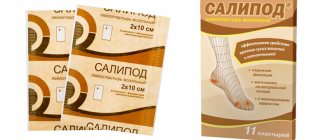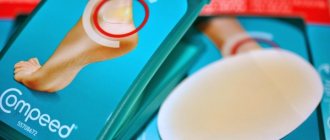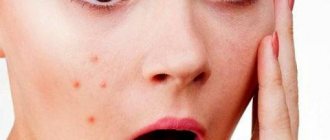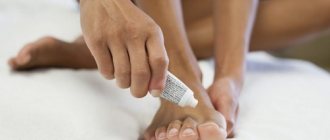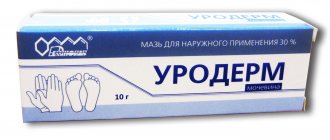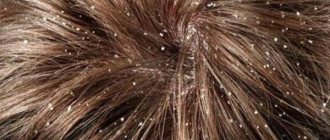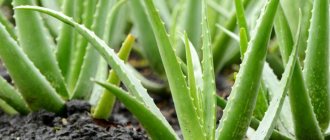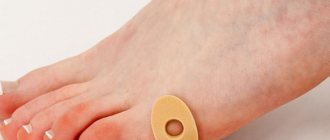Dry calluses without a core do not pose a threat to health. They cause aesthetic discomfort, especially in women. In rare cases, seals cause discomfort when walking, so their appearance cannot be ignored. Folk remedies for dry calluses are a reliable way to eliminate growths. The use of recipes rarely leads to side effects, quickly softens the skin and returns softness and tenderness to the feet.
Lemon + aspirin
Grind 6 aspirin tablets with a small amount of lemon juice. Apply this mixture to a callus or corn, wrap your foot in cling film or wrap it in a regular plastic bag. Apply a hot compress on top of the film - cloth or gauze soaked in hot water. 15 minutes is enough for effective impact. Remove the film, wash off the paste, and rub the callus with a pumice stone. Small calluses can be removed the first time using this super product! For larger calluses, repetition will be required: you can carry out these manipulations at least every day until the rough skin completely disappears.
How doctors remove calluses
The fastest, safest and most painless method is hardware procedures. Removal of the formation is carried out using a special cosmetology device equipped with an automatic cutter fixation system. This eliminates the risk of soft tissue damage. The procedure itself is painless and does not require special preparation. The session time ranges from 10 to 60 minutes. It depends on the number of dry calluses and the degree of their neglect.
Before starting work and during the procedure, the skin is thoroughly disinfected. In case of increased sensitivity, the patient is given topical anesthesia. When treating calluses and corns, the skin is cooled using a spray.
After removing a callus or corns, the skin is polished, and the edges of the treated area are smoothed so that there is no discomfort when walking later. After completion of the procedure, the treated surface is protected with a bandage.
In this way, you can remove any corns, including dry calluses on your toes or feet.
Features of hardware procedures:
- absolute safety – the surface being treated is thoroughly disinfected, which eliminates the risk of infection;
- speed – unlike home procedures, the removal of corns and calluses in a cosmetology clinic is performed quickly and efficiently. One procedure is enough;
- painlessness – automatic fixation of the cutter on the equipment protects the skin from accidental injury and pain;
- no contraindications – anyone can use hardware callus removal.
Tomato compress
Tomato pulp also helps soften the skin and gradually remove calluses. Apply tomato pulp to the hardened area and wrap in film. You can apply a hot compress on top, or you can do without it. After an hour, wash off the tomato mask and rub your skin with a pumice stone.
Author: Ekaterina Solovyova
Please note that the information presented on the site is for informational and educational purposes only and is not intended for self-diagnosis and self-medication. The selection and prescription of medications, treatment methods, as well as monitoring their use can only be carried out by the attending physician. Be sure to consult a specialist.
Callus
Calluses can be especially painful. In the center of the callus there is a hole from which the head of the callus protrudes. This head covers the root, which goes deep into the soft tissues and causes pain when walking.
Such a callus can form as a result of a foreign body (for example, a splinter or a pebble) getting under the skin. If the splinter is not removed, when it moves, it begins to irritate the tissues surrounding it, and the body, in response to irritation, forms a corpus callosum, but not from the outside, but from the inside. Another reason for the appearance of calluses is a dermatotropic virus.
Recommendations after removing dry calluses on the feet (toes)
After hardware removal of calluses and corns, it is recommended to wear loose shoes made from natural materials. It is better to give up high heels for 2 weeks, and also not visit swimming pools and saunas for a month. It is better to treat the skin with a disinfectant composition.
Patients who successfully get rid of dry calluses experience lightness in their legs and no pain while walking.
It is better to prevent the occurrence of corns and regularly remove rough skin on the feet. By periodically undergoing a medical hardware pedicure procedure, you will not be aware of such problems as rough skin on your feet and the occurrence of complications.
If you want to remove dry callus, contact the SM-Cosmetology clinic. At the initial consultation, the podologist will conduct an examination and select the optimal method to solve your problem. You can remove calluses and corns after one visit to a cosmetology clinic.
—>
Traditional methods of treatment
Treating calluses on the feet at home can be done using traditional methods. The action of the products should be aimed at softening and moisturizing the feet. The treatment algorithm includes:
- steaming the skin,
- cleansing the stratum corneum with a scraper,
- application of emollient
- removing problem areas with pumice.
If a dry callus does not have a core, does not crack and does not cause pain, it is not necessary to treat it with brilliant green or iodine.
When there is a threat of inflammation or suppuration has begun, you need to steam your leg in a pink solution of potassium permanganate for 15 minutes. Dry each toe and foot with a towel and apply iodine or brilliant green with a cotton swab directly to the callus. The procedure destroys the bacterial infection, accelerates the healing of cracks and forces the accumulation of pus to break through.
Therapeutic baths
Steaming prepares the skin to cleanse dead layers, improves blood circulation, and allows medicinal substances to penetrate as deeply as possible.
The duration of the therapeutic bath is about 20 minutes. This is a simple procedure that can be easily done at home:
- An effective way to steam your skin is baking soda . You need to grate a bar of laundry soap. Take a large spoonful of shavings and dissolve in 2 liters of hot water. Add the same amount of baking soda there. You can use another recipe by dissolving a spoonful of sea salt and soda in 2 liters of water.
- To quickly soften calluses, you need to pour 2 tablespoons of chamomile flowers into a liter of boiling water. Infuse, strain, dilute with hot water by half. Place 2 tablespoons of baking soda and a spoonful of soap shavings into the liquid. This bath is useful to use not only for treatment, but also for the prevention of calluses.
- Hard seals can be easily removed with oat straw. You need to pour boiling water over the raw materials in a ratio of 1:10. Place on the stove and cook for half an hour, stirring continuously. Cool slightly, strain into a wide basin, and immerse your feet for 20 minutes. At the end, clean the stratum corneum with a scraper and lubricate your feet with nourishing cream.
Other methods of home therapy
- Old calluses can be easily removed by applying propolis. A pea-sized ball should be heated and the problem area should be sealed with it. Place a patch on top and leave for 3 days. Remove, steam the feet and treat with pumice.
- You can treat calluses with apple cider vinegar. You need to soak the crumb of white bread in the product and apply it to the formation. Don't take it off all night. To eliminate the growths, you will need to carry out the procedure for a week.
- A simple method of therapy is sunflower oil. It needs to be slightly warmed up, soaked in gauze and wrapped around the foot. Insulate with polyethylene and put on socks. Do not remove for 6-8 hours.
- Figs soften and restore the skin . You need to take one ripe fruit and mash it. Add a teaspoon of natural honey and a tablespoon of apple cider vinegar to it. Spread the mixture in a thick layer and leave overnight.
If the callus cannot be eliminated for a long time or its presence causes discomfort, you should consult a dermatologist. Dry callus can easily be confused with a plantar wart, a dangerous disease that requires treatment with Groprinosin and other antiviral drugs.
Prevention
Treatment always takes time and effort, so it is better to protect yourself from the appearance of growths on the skin. By following these simple tips, you won't have to worry about getting corns:
- Choosing the right shoes. Give preference to shoes made of soft materials; they must fit exactly on your feet and not be too small, narrow or tight. Put high heels aside: the optimal height is 5 cm for daily wear, everything else is suitable only for special occasions;
- Skin care on the feet. Be sure to maintain hygiene: wash your feet daily, apply a nourishing or moisturizing cream, take steaming baths, remove dead skin with a pumice stone for your feet;
- Monitor your health. If you have flat feet, wear special orthopedic insoles; an orthopedic doctor will help you choose them. If the cause of corns is excess weight, then it is necessary to normalize it. Diabetes mellitus and hormonal disorders are a reason to consult your doctor to get rid of symptoms.
Dryness and calluses can occur in anyone. It is advisable to prevent their formation, but otherwise, you can use traditional methods of treating corns. To do this, you just need to be patient and perform all the required actions, and then the effect will not be long in coming.
What to do with hard calluses?
A hard callus is essentially a dry callus.
Naturally, you need to get rid of it.
Let's take a closer look at some official pharmaceutical products for the treatment of calluses.
Treated with Anticorn Super cream.
It is used to moisturize and gradually soften.
It contains many natural plant components with bactericidal and softening properties.
They are also treated with the oily liquid “Feresol” with a cauterizing effect due to the content of phenol and tricresol.
It also has antimicrobial, anti-inflammatory, bactericidal and softening effects.
They are also treated with a very effective remedy - Roacutane gel.
This gel has a keratolytic effect.
Due to the content of salicylic, lactic, boric, benzoic and citric acids in its composition.
And finally, a few words about the Salipoda patch.
This convenient patch has long proven its effectiveness.
It has a pronounced softening antimicrobial effect.
But before using these products, you must carefully re-read all contraindications and strictly adhere to them.
How to remove the rod
Calluses on the stem are difficult to treat, often the shaft goes deep, and the affected area increases in size. To avoid the appearance of such formations, it is necessary to carefully observe the rules of personal hygiene and get tested for HPV.
The best home method for removing the rod is celandine. Treat dry, pre-steamed skin with plant juice, or apply a fresh leaf. After a quarter of an hour, rinse the area thoroughly with warm water. The plant has a bactericidal and cauterizing effect.
First, the foot must be steamed in a mustard bath - 1 tbsp per 3 liters of water. l. powder, keep for half an hour.
If you are intolerant to celandine, calluses should be rubbed with fresh banana peel several times a day for 2 weeks.
In advanced cases, the growth on the stem is removed with a laser, or the cryodestruction method is used.
A callus is a minor detail with significant consequences.
The foot also needs attention
“Just think! Callus or discomfort when walking. I’ll come home, put on my favorite slippers and everything will be fine. But it’s not that simple, unfortunately.” Any of our wrong actions (or inactions) sooner or later lead to consequences.
The human foot is analogous to a shock absorber in a car. The longitudinal and transverse arches allow you to counteract the pressure when walking. Since childhood, our foot, its mobility, and the tendon-muscle complex require training. By paying attention to this in time, we will get healthy and strong legs for many years. But this is all in theory, which is often very far from practice.
Usually, an orthopedic doctor sees a much larger number of problems in his patients who come in with a callus that no longer allows them to walk calmly. And there is a deformation of the big toe, and on the flat (and a healthy foot is always concave) sole there is a red, rough callus, with the skin very painful when touched, both on it and around it. X-rays will only confirm the obvious diagnosis – flat feet with calluses.
A problem from time immemorial
Since ancient times, people have been walking a lot in our area. At first barefoot and in bast shoes, with the passage of time “changing shoes” into boots and felt boots. But from the “window to Europe”, cut by Peter the Great, came the Parisian fashion for shoes, wigs, and colorful clothes. But the rules of hygiene both in St. Petersburg and Paris appeared later. Therefore, no one even thought about washing their feet every day. There were, of course, exceptions to the rules. But even for such people, external gloss and pathos played a much greater role than the cleanliness of their legs.
And the tradition of the Russian bathhouse came to naught. Running barefoot through the snow for a while, then putting on soft boots after that... More and more, this has become some kind of curiosity, and not a weekly everyday ritual of our people.
Customized shoes
We have all read the wonderful fairy tale “Cinderella”, where the events revolved around the Crystal Slipper. As we remember, only one Cinderella was suitable for these outlandish shoes. Fairy Godmother made it “custom-made” for her, taking into account her leg. But this is still a fairy tale, and the reality is much less magical. Therefore, our women (no doubt, they are still as beautiful as Cinderella, but...) have to put on their long-suffering feet rigid designs with impressive heels, which do not take into account the characteristics of their feet, instep, toes, and heels. As a result, the position and relief of the foot are disrupted.
If you walk barefoot, the load is evenly distributed between the heel area and the base of the toes. The arches of the feet are also correctly included in the work, which thereby perform their main shock-absorbing function. And in current shoes, and especially high-heeled shoes, the main load falls on the metatarsophalangeal joints (the base of the fingers). Nature did not provide for this. And when walking, the joints become deformed, experience a load they were not designed to bear, and the foot “straightens.” Calluses appear, which quickly “acquire” a mucous membrane. It is she, although hidden from view, that causes pain. And in the future it may well become inflamed and fester. Now, if every woman could afford shoes made of soft leather with low, stable heels with a well-thought-out internal relief, then there would be significantly fewer orthopedic patients.
Our feet are worth taking care of.
If you didn’t know what foot deformity is and what the consequences of this phenomenon are, follow our advice. After all, you don’t want to look for advice on how to deal with calluses that have already appeared?
First of all, you can go back to basics and walk barefoot more. Naturally, if you come to work barefoot, they won’t understand this, but at home you can easily afford it. Also, before going to bed, wash your feet with cool water and rub your feet with a slight massage. Terry or canvas towels are perfect for this. If you spend the evening in a stationary environment at the computer or watching TV, then get some kind of rolling pin massager and roll it with the arch of your foot. Also, do not forget to stretch and train the muscles and joints of your legs. To do this, take a few minutes and just walk alternately on your heel and on your toes. All these procedures are absolutely not complicated, take a minimum of time and provide maximum benefits.
If it’s too late to perform these exercises, and flat feet and corns have already entered your life, then do not despair and follow the following recommendations. First of all, you need to give up uncomfortable shoes. Yes, it may not be as beautiful as you are used to, but something will have to be sacrificed. And let this victim not be your feet. Make sure that the shoes have orthopedic insoles and arch supports, or, in extreme cases, line the insole with foam rubber. You can cut a hole in it under the callus, reduce the pressure on it when walking, thereby relieving pain and reducing irritation of this area with subsequent aggravation of the problem. Well, use anti-callus plasters and bath liquids.
Perhaps this will allow you to avoid surgical methods for treating deformed feet.
This is always a difficult option to try to avoid. Conservative methods should not be neglected. But only after consulting a specialized doctor. Do not neglect inflammatory processes on the foot. They are quite dangerous. Also, increased attention to these problems should be paid to older people, diabetics and overweight people. This is a kind of “risk group” that is more likely to encounter complications than others. Author: K.M.N., Academician of the Russian Academy of Medical Sciences M.A. Bobyr
Treatment of dry old calluses
The main principle will be repeated steaming with gradual scraping with a pumice stone. Or, after softening in hot water with herbal infusions, with the addition of salts and oils, medicinal ointments are used for baths.
Photo: https://www.notizie.it/wp-content/uploads/2018/06/verruche-plantari.jpg
Traditional recipes help remove calluses:
- Onion skins soaked in vinegar. In the form of acid, it is kept for two weeks. Then dry and apply. But healthy skin around the area needs to be protected with greasy cream, Vaseline, lard or goose fat.
- Kalanchoe leaves with the outer skin removed. They are tied onto a pre-steamed callus. Then they scrape off what has softened and rub it with moisturizer.
- Indoor Crassula or Money Tree. Treat its leaves in the same way as Kalanchoe.
Beauty salons offer hardware removal. A special technique easily removes rough, dead epidermis. But such services are expensive, and there is always a risk of infection.
If treated correctly, they are removed without leaving any traces. But neglected, very outdated ones can lead to unpleasant and painful complications. And, of course, the best option would be to prevent the appearance of calluses.
New shoes should be worn together with socks until they take the shape of your feet. Flesh-colored patches are the most useful thing in your purse in case of scuff marks. Gel insoles also save you from discomfort.
